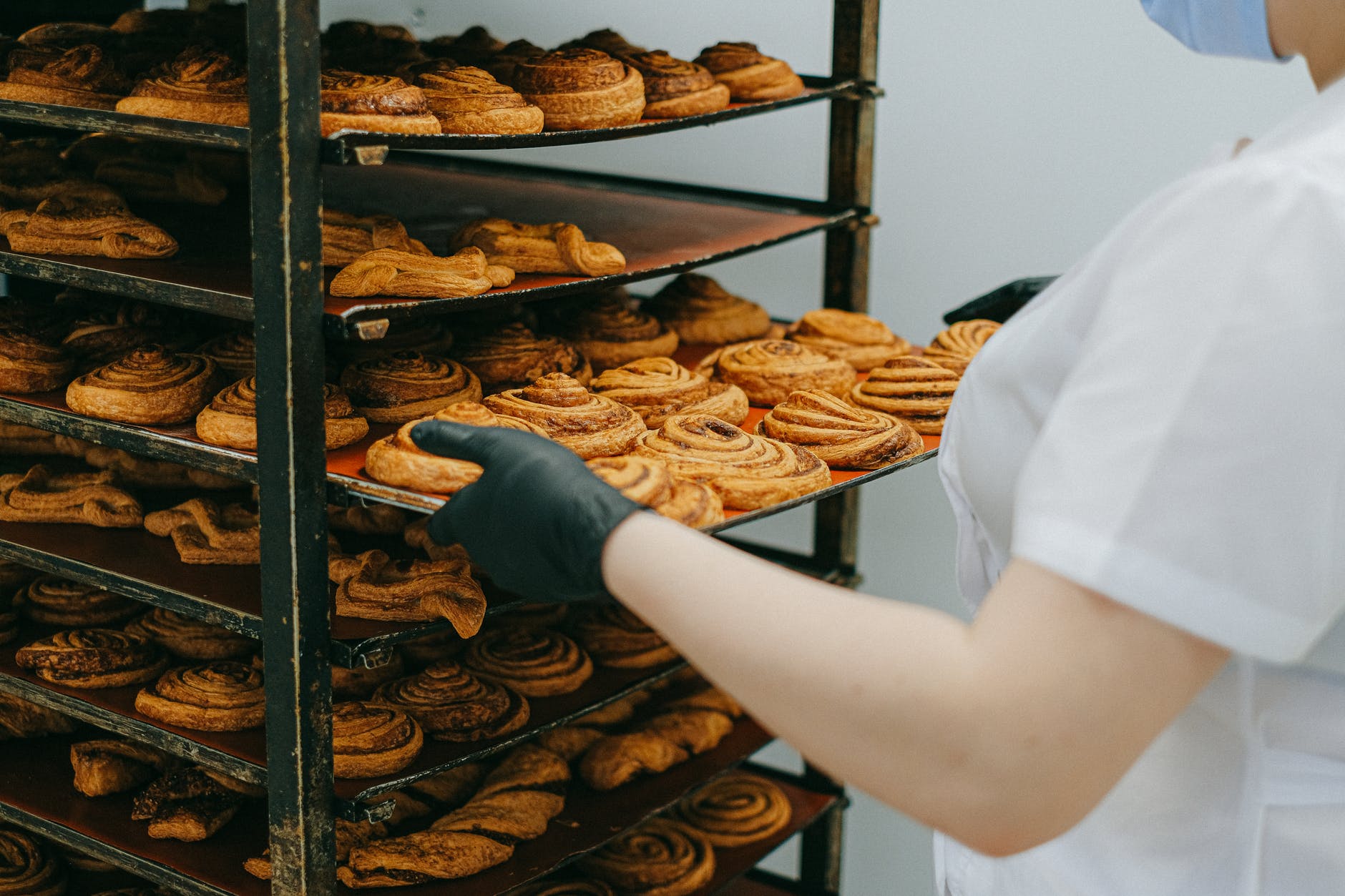Labour has been a central part of Merritt’s Bakery since it was founded by owners Larry and Bobbie Merritt. It began as most small businesses do with the owners putting most of the labor. As the business grew, however, the owners realized that they had to formalize the company to promote future growth. Every section of this paper will explore how the Merritts used core principles of human resources to grow their bakery to one of the most popular in Tulsa, Oklahoma.

Describe how the span of control, centralization, and formalization have changed at Merritt’s Bakery over the years.
How did span of control change since Merritt’s Bakery opened?
McShane, Steen & Tasa (2018) define span of control as the number of people who report directly to the next person in the hierarchy. A narrow span of control, for example, would have maybe five employees reporting to a store owner. Conversely, a wide span of control is when one manager, in a multinational corporation, for instance, has 20 or 30 employees reporting to them. With that in mind, it is possible to examine how span of control has evolved at Merritt’s Bakery.
The span of control has undergone quite a transformation since Merritt’s Bakery first opened its doors. In 1979, the owners, Larry and Bobbie Merritt and they were responsible for everything that went into selling a product, specifically a cake, so there was no span of control. Over the years, the span steadily grew wider. Expansion number one happened when a nearby doughnut store around the corner went up for sale. The larger location increased Merritt Bakery’s span of control to two people: the front of house employees who handled sales and service. Sales increased 13-fold and the number employees jumped from two to 20. Augmentation number two occurred in 1993 when Merritt’s Bakery moved from the doughnut shop to a 557-square-metre location. After the second move, the couple was reluctant to widen their span of control. Consistently working 20-hour days convinced the Merritts that formalizing the business was unequivocally needed if they wanted to keep growing.
What role did centralization play in the bakery’s growth?
McShane et al (2018) characterize centralization as any time when “formal decision-making authority is held by a small group of people, typically those at the top of the organizational hierarchy,” (p. 371). Merritt’s Bakery became centralized in 2001 when a second store was opened. The centralization could be seen when Larry personally retained control of training the bakers at each store. Further evidence of centralization is seen 2007 when Merritt’s bakery opened an official production facility, eliminating the need for baking staff at the individual store locations. With the crux of the business’ operation set in one location, formalization could take place at each store.
Formalization explained and its role in the growth of Merritt’s Bakery
McShane et al (2018) explain that formalization is the process where a company standardizes the behaviour in the organization through the creation of rules, formal procedures and trainings. This coordination enables more people to do the necessary work, according to management’s specifications. Formalization officially began when the Merritt’s son, Christian joined the company in 2000. He developed flow charts that outlined the exact practices for multiple roles including, but not limited to front of house tasks e.g. using the cash register and sales procedures. Further formalization also is evident when Christian introduced a central computer system to track information relating to each store in one place. Finally, formalization cemented its role in the growth pattern of Merritt’s Bakery in 2007 when the company expanded upon its production facility and determined that trainings would happen there. Training went from initial orientation sessions to a structured series of clinics that adds up to 20 hours of training on the ins and outs of the bakery’s procedures to ensure customers have a consistent experience each time they visit the store, regardless of which location it is.
Is the company’s structure today more mechanistic or organic?
McShane et al (2018) state that a company’s structure is mechanistic when there is a narrow span of control and high amounts of formalization and centralization, allowing for limited decision making among lower-level employees. An organic structure, on the other hand, is one where there is a wide span of control and tasks can be re-structured to accommodate new situations. Based on these definitions, it is clear that the structure at Merritt’s Bakery is mechanistic.
Are these three organizational structure elements well-suited to the company in its current form? Why or why not?
From the evidence presented in the case study, it is clear that centralization, formalization and a mechanistic organizational structure are beneficial to Merritt’s Bakery. When buying food from a company, consumers expect to get the same quality, regardless of location. Examples of this include, but are not limited to McDonald’s, Burger King and Taco Bell. A person can visit a location in Pennsylvania and another in Wisconsin; they will get the same food experience because of the centralized authority, formal rules and procedures for making and serving the food. Merritt’s Bakery seems to be following the same growth pattern as the aforementioned fast food companies. After implementing the new policies revenues increased 13-fold, reduce production costs and employ 80 people (McShane et al., 2018). To keep improving on these figures, they must continue to embrace and expand upon the organizational structure elements previously established by the Merritts. Any deviation could cause customers to complain about a difference in quality of the treats they have come to love. It does not make sense to risk that.
How is departmentalization portrayed at Merritt’s Bakery?
What form of departmentalization currently exists at Merritt’s Bakery?
McShane et al (2018) explain that there are six distinct forms of departmentalization: simple, functional, divisional, team-based, matrix and network. For simplicity’s sake, this paper will only outline the first two forms, simple and functional, as they are the only forms Merritt’s Bakery has adopted since its opening. The former, simple departmentalization, is defined as an organizational structure where there is “minimal hierarchy [and it is] usually just employees reporting to the owners. Employees perform broadly designed roles because there are insufficient economies of scale to assign them to specialized jobs” (McShane et al., 2018, p. 373). Merritt’s Bakery utilized this form of departmentalization from the time it opened until 2000 when their son Christopher came into the business and truly formalized different roles in the company with his flow charts. Since then it has been expanded, and that has allowed the bakery to become an organization that uses functional departmentalization.
The latter, functional departmentalization, however, is a bit more complex. It entails grouping employees based on specific skill sets. A prime example would be how Merritt’s Bakery has defined roles for employees who will be involved in the customer service component of the business. These employees begin their training at the production facility, but are then assigned to a store. This is in stark contrast bakers who are located at the production facility and remain there once their training is complete.
Would you recommend this form of departmentalization to this company? Why or Why not?
Functional departmentalization is absolutely the most beneficial for Merritt’s Bakery as the company stands presently. The owners aim to give its growing customer base the same food experience regardless of which Tulsa, Oklahoma location they visit. According to McShane et al. (2018), departmentalization is favorable to a company like Merritt’s Bakery for multiple reasons. Firstly, it establishes a specific chain of command; all employees know who to approach with issues or suggestions and can have a set idea of when their complaints or suggestions will be addressed. Secondly, it creates a unified company mentality, which motivates them to work towards a singular goal, promoting Merritt’s in the most efficient ways to increase its customer base. Lastly, this form of departmentalization enables employees to form unofficial groups based on their assignments and work together to increase the productivity of their department.

Conclusion
Merritt’s Bakery perfectly exemplifies how small businesses can grow into thriving enterprises with loyal followings. The owners Larry and Bobbie Merritt worked hard in the bakery in its early days to craft a signature style for their customers. As the business grew, Larry made sure to keep the brand consistent by overseeing the training of the bakers he and his wife hired. Eventually, the business became so successful that this was no longer possible. Luckily, the Merritt’s son Christopher was able to come into the company in 2000 and begin laying the groundwork for a true enterprise that does not require the owners to be involved in every aspect of the business. Tactics such as centralization, formalization and departmentalization enabled the company to grow so popular that it needed a central production location in addition to independent locations where customers can order their favorite confections. Last, but not least, as the company continues to grow, it is clear that Merritt’s Bakery is starting to evolve into more complex forms of departmentalization. Currently, the organization utilizes functional departmentalization, but given its amazing rate of growth, it is highly likely that it will need to evolve again soon.
Reference
McShane, S. L., Steen, S., & Tasa, K. (2018). Canadian organizational behaviour (10th ed.). McGraw-Hill Education.







